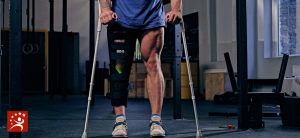Being able to bend your fingers is a movement so natural to everyday use, we can take it for granted. If or when your fingers or thumb catch or lock when bent, it can be a painful condition known as trigger finger.
Ordinarily, the tendons and muscles in your hand and arms bend and straighten your fingers and thumbs. The tendon itself usually glides through the tissue (or sheath) that covers it thanks to the synovium, a lubricating membrane surrounding the joint.
But if the tendon becomes inflamed and swollen, prolonged irritation of the tendon sheath will produce scarring and thickening that inevitably impedes the tendon’s motion. As a result, bending your finger or thumb can tug the inflamed tendon through a narrower sheath, which make it snap or pop.
Repeated movement or the forceful use of the finger or thumb is usually what causes trigger finger. Although it can also be caused by rheumatoid arthritis, gout, and diabetes, or by grasping something firmly for a long period of time.
That’s why industrial workers, musicians, and farm hands often suffer from trigger finger – because they repeat finger and thumb movements often. The condition is more common among women than men, and occurs most often in people who are between 40 and 60 years old.
How Do You Know You Have Trigger Finger?
One of the most obvious symptoms of trigger finger is when you experience soreness at the base of the finger or thumb. There’s also a painful clicking or snapping sound when you bend or straighten the affected finger. The catching sensation associated with trigger finger tends to get worse after you rest the finger or thumb. The finger or thumb may lock in a bent or straight position as the condition worsens and may need to be gently straightened out with your other hand.
In some cases, the finger may be swollen and there could be a bump over the joint in the palm of the hand. Also, the finger may be stiff and painful or locked in a bent position. Of course, your doctor can examine your hand and fingers and diagnose trigger finger without a lab test or X-ray.
In terms of treating trigger finger, the first step requires resting your finger or thumb. To keep the joint from moving, your doctor may put a splint on your hand.
If your symptoms persist, your doctor may address the inflammation by prescribing drugs like ibuprofen or naproxen. Another option is injecting a steroid into the tendon sheath. Or, if your trigger finger doesn’t improve, your doctor may recommend surgery.
The recovery time from trigger finger will depend on the severity of the condition and the choice of treatment. Splinting, for example, could last up to six weeks. However, most patients recover within a few weeks provided they rest the finger or thumb and they take anti-inflammatory medication.
The Colorado Center for Orthopaedic Excellence in Colorado Springs regularly treats injuries to bones and joints, providing the best of care. If you’ve feeling pain in your hands and suspect it may be trigger finger or another condition, our board-certified orthopedic surgeons will diagnose the condition and explain your treatment options. Call us at (719) 623-1050 today for an appointment.
















